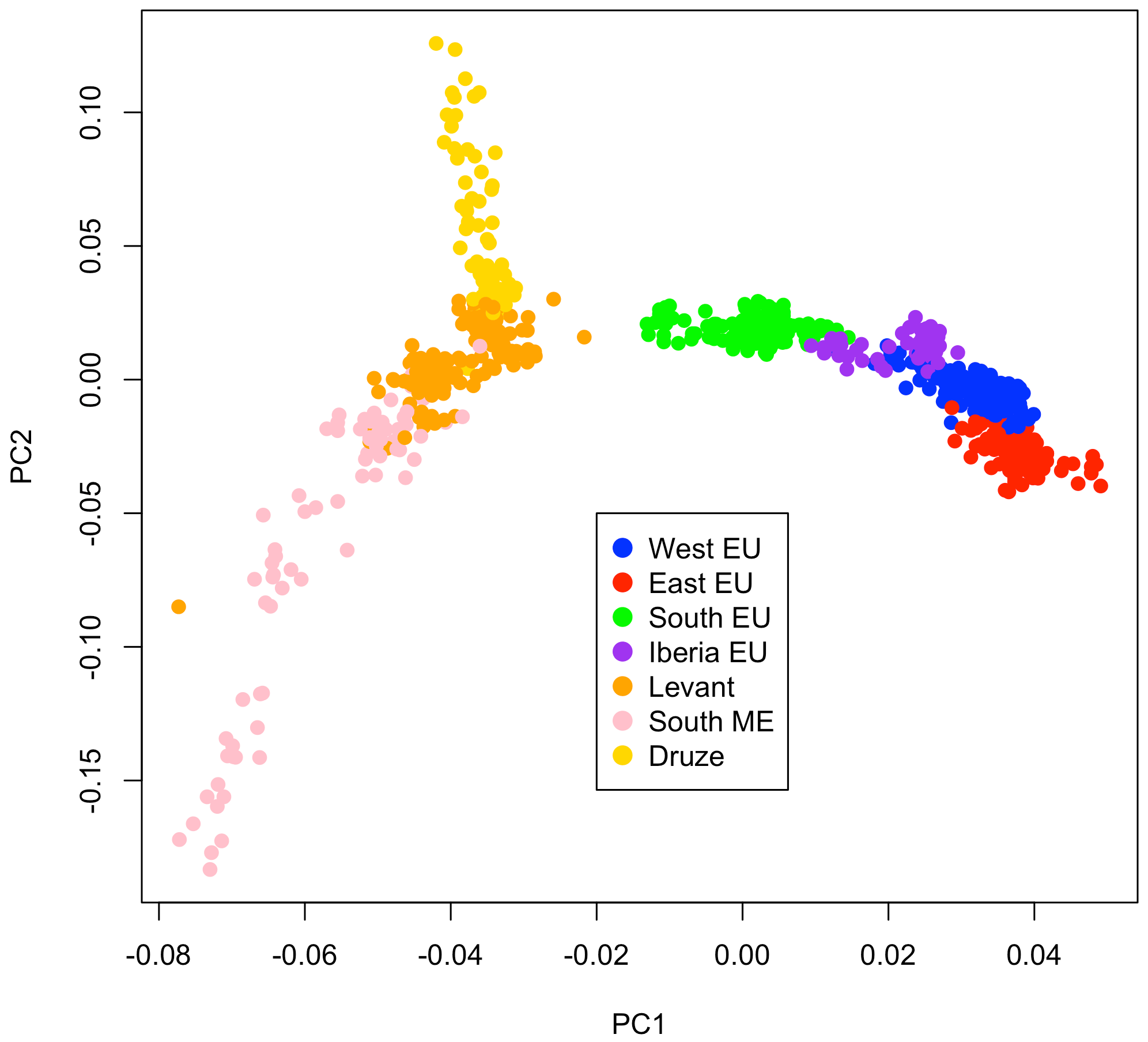Open access The time and place of European admixture in Ashkenazi Jewish history, by Xue, Lencz, Darvasi, Pe’er, & Carmi, PLOS Genetics (2018).
Abstract (emphasis mine):
The Ashkenazi Jewish (AJ) population is important in genetics due to its high rate of Mendelian disorders. AJ appeared in Europe in the 10th century, and their ancestry is thought to comprise European (EU) and Middle-Eastern (ME) components. However, both the time and place of admixture are subject to debate. Here, we attempt to characterize the AJ admixture history using a careful application of new and existing methods on a large AJ sample. Our main approach was based on local ancestry inference, in which we first classified each AJ genomic segment as EU or ME, and then compared allele frequencies along the EU segments to those of different EU populations. The contribution of each EU source was also estimated using GLOBETROTTER and haplotype sharing. The time of admixture was inferred based on multiple statistics, including ME segment lengths, the total EU ancestry per chromosome, and the correlation of ancestries along the chromosome. The major source of EU ancestry in AJ was found to be Southern Europe (≈60–80% of EU ancestry), with the rest being likely Eastern European. The inferred admixture time was ≈30 generations ago, but multiple lines of evidence suggest that it represents an average over two or more events, pre- and post-dating the founder event experienced by AJ in late medieval times. The time of the pre-bottleneck admixture event, which was likely Southern European, was estimated to ≈25–50 generations ago.

Interesting excerpts:
(…) AJ genetics defies simple demographic theories. Hypotheses such as a wholly Khazar, Turkish, or Middle-Eastern origin have been disqualified [4–7, 17, 55], but even a model of a single Middle-Eastern and European admixture event cannot account for all of our observations. The actual admixture history might have been highly complex, including multiple geographic sources and admixture events. Moreover, due to the genetic similarity and complex history of the European populations involved (particularly in Southern Europe [51]), the multiple paths of AJ migration across Europe [10], and the strong genetic drift experienced by AJ in the late Middle Ages [9, 16], there seems to be a limit on the resolution to which the AJ admixture history can be reconstructed.

Historical model and interpretation
Under our model, admixture in Europe first happened in Southern Europe, and was followed by a founder event and a minor admixture event (likely) in Eastern Europe. Admixture in Southern Europe possibly occurred in Italy, given the continued presence of Jews there and the proposed Italian source of the early Rhineland Ashkenazi communities [3]. What is perhaps surprising is the timing of the Southern European admixture to ≈24–49 generations ago, since Jews are known to have resided in Italy already since antiquity. This result would imply no gene flow between Jews and local Italian populations almost until the turn of the millennium, either due to endogamy, or because the group that eventually gave rise to contemporary Ashkenazi Jews did not reside in Southern Europe until that time. More detailed and/or alternative interpretations are left for future studies.
Recent admixture in Northern Europe (Western or Eastern) is consistent with the presence of Ashkenazi Jews in the Rhineland since the 10th century and in Poland since the 13th century. Evidence from the IBD analysis suggests that Eastern European admixture is more likely; however, the results are not decisive. An open question in AJ history is the source of migration to Poland in late Medieval times; various speculations have been proposed, including Western and Central Europe [2, 10]. The uncertainty on whether gene flow from Western Europeans did or did not occur leaves this question open.

Featured image: Expulsions of Jews, from Wikipedia.